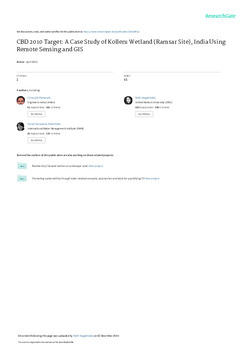CBD 2010 target: a case study of Kolleru Wetland (Ramsar Site), India using remote sensing and GIS

Citation
Pattanaik, C. et al. (2010). CBD 2010 target: a case study of Kolleru Wetland (Ramsar Site), India using remote sensing and GIS. IUP Journal of Earth Sciences, 4(2):70-77
Regular monitoring of wetlands is an essential element of management for 'wise use'. Indeed, the Ramsar convention requires routine monitoring in order to detect changes in the ecological character at listed sites. However, there are few examples of monitoring of tropical wetlands on a sustained basis in the world. In the present study, we quantified land use/land cover changes in the lone Ramsar site, the Kolleru Wildlife Sanctuary of Andhra Pradesh, India between 1977 and 2007 using remote sensing and GIS techniques. It was found that there was a significant increase in aquaculture farming (158.5 sq km) from 1977 to 2000, which put the habitat of flora and fauna in adverse conditions. The natural function of lake was being restored after the demolition of fishponds ordered by the Honorable Supreme Court of India it 2006. This study highlights the firsthand information to the user community after demolition, and offers suggestions for the future conservation of the lake. We suggest that remote sensing and GIS tools have a significant role in meeting the reported requirements for the CBD 2010 target.
Permalink
Date Available
Type
Publisher
Countries
ISSN
0973-8525
Language